Groundbreaking Celebrated for Final Phase of West Falls Development, Nov. 19
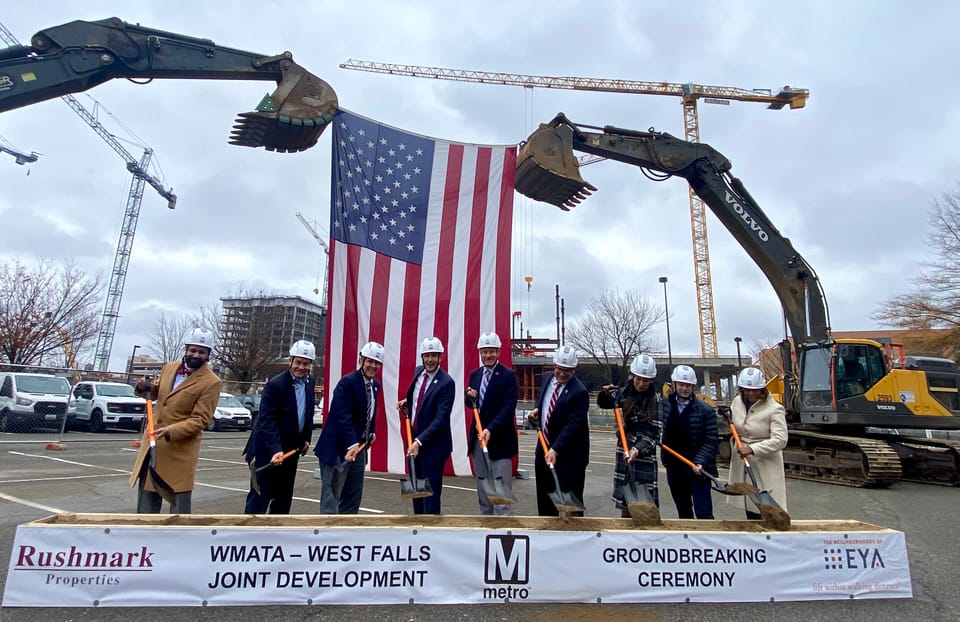
Phase III has arrived – the final segment of Transit-Oriented Development (TOD) envisioned in the West Falls Church Master Plan and the largest mixed-use development project in the City’s history.
Upon completion of the final phase, the West Falls Development Project will extend across jurisdictional boundaries from W. Broad Street in the City of Falls Church, to the West Falls Church Metro Station at 7040 Haycock Rd., Falls Church, in Fairfax County.

The Three Phases
Phase I of the project, now complete, was designed to “serve as a gateway to the City” at W. Broad St., and to instill “a sense of place through the use of high quality urban design, including a thoughtful interface” with the public middle and secondary school campuses. Phase II is ongoing with the construction of the new headquarters for HITT Contracting, 85 townhomes and a 7-story apartment building with 320 units. An adjacent property at Converge West Falls is also being developed through Virginia Tech.
The concluding Phase III of the project is designed to "seamlessly connect” residents, pedestrians, visitors, and employees to “a vibrant mixed-use neighborhood decades in the making and the final phase of a 40-acre master plan that will connect housing, transit and open space at the West Falls Church Metro Station,” partners and developers EYA LLC, Rushmark Properties and Metro said in a Nov. 6 press release.
Rising From the Asphalt
Soon to arise from the expansive acres of asphalt parking at the West Falls Church Metro Station, “82 townhomes, including 13 affordable units and 10 live/work residences designed for small professional offices,” plus “over 570 units across two multifamily buildings, with a third planned, an office building, and a range of public amenities and improvements.” Phase III will also add to the City’s stock of affordable housing units, public parks, green spaces, and dog parks, officials have said.

The project is “being delivered through a joint public-private partnership between Metro, EYA and Rushmark Properties as part of Metro’s broader strategy to maximize ridership and community value through transit-oriented development.”
The Groundbreaking
Despite darkened skies, cheery faces were seen all around as local and regional politicos and stakeholders assembled for the celebratory groundbreaking Wednesday, Nov. 19. A monumental American flag backdrop held aloft by construction cranes had been erected behind the stage set up in the bleak West Falls Church Metro parking lot. Clanking construction sounds and the movement of skyscraping cranes across the way provided further atmospherics.
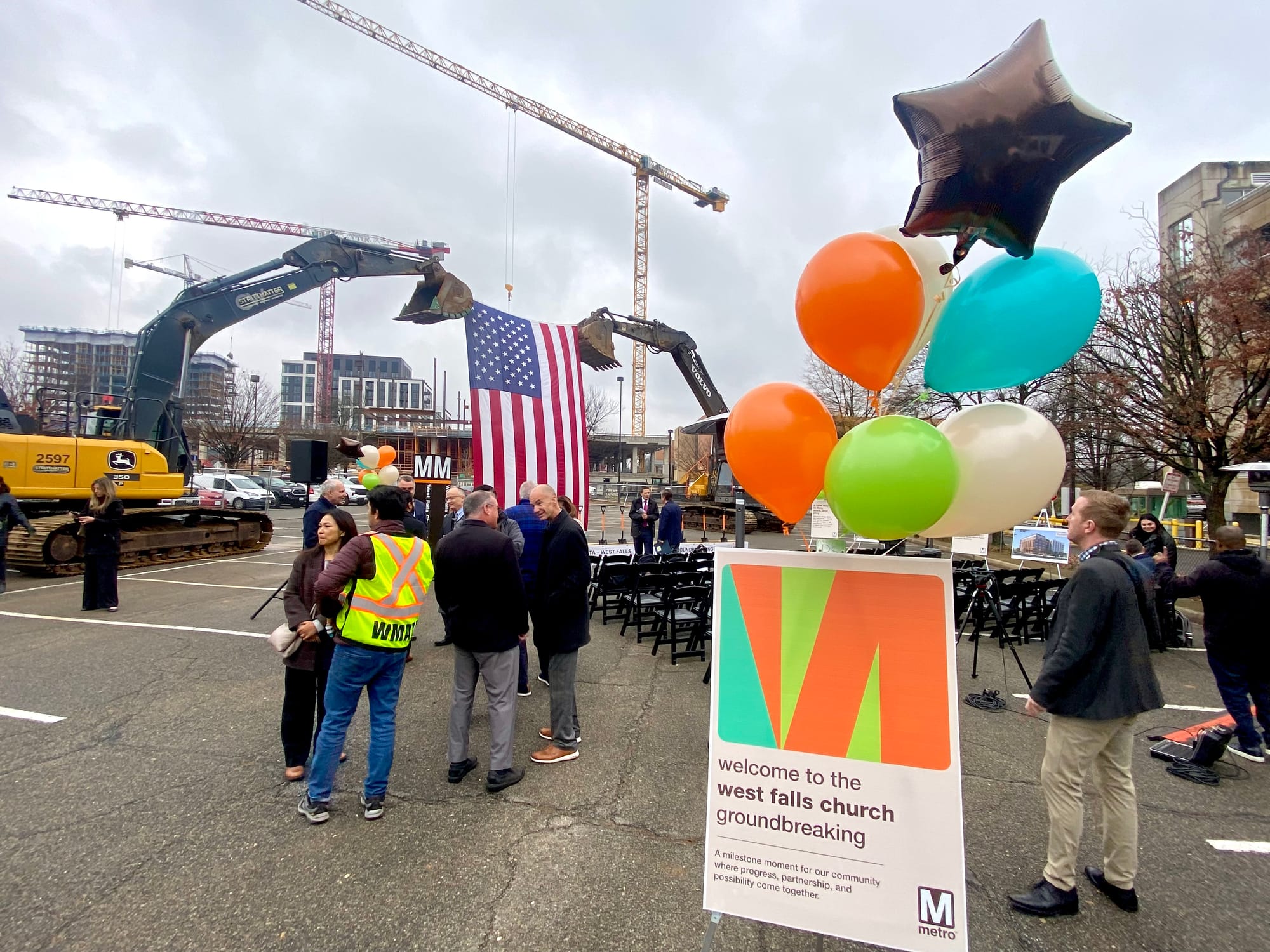
Signs posted around the stage boasted of things to come: "A new way to live, work, and play, places to shop, dine, live and work – along with parks, plazas and greenways – all seamlessly connected to West Falls Station Blvd.," and "From parking lot to vibrant transit-oriented community, 24 acres of surface parking will become a walkable, mixed-use neighborhood."
Emceed by the General Manager and CEO of Metro, Randy Clarke, the groundbreaking ceremony featured speakers: Chairman of the Fairfax County Board of Supervisors, Jeffrey C. McKay, Fairfax County Board of Supervisors member (Dranesville District), James N. Bierman, Jr., Executive Vice President of Acquisition and Development, EYA, Evan Goldman, Vice President, Rushmark Properties, Neal Kumar, and Metro Board of Directors member Walter Alcorn.
“What I’m most excited about is that we’re tying multiple parcels together to make what I was just told is about the same size as the Mosaic District [in Fairfax County], and when you think about its size and the economic activity to go with the housing, from where we are to that is monumental,” Metro’s CEO Randy Clarke said as he launched the groundbreaking ceremony.
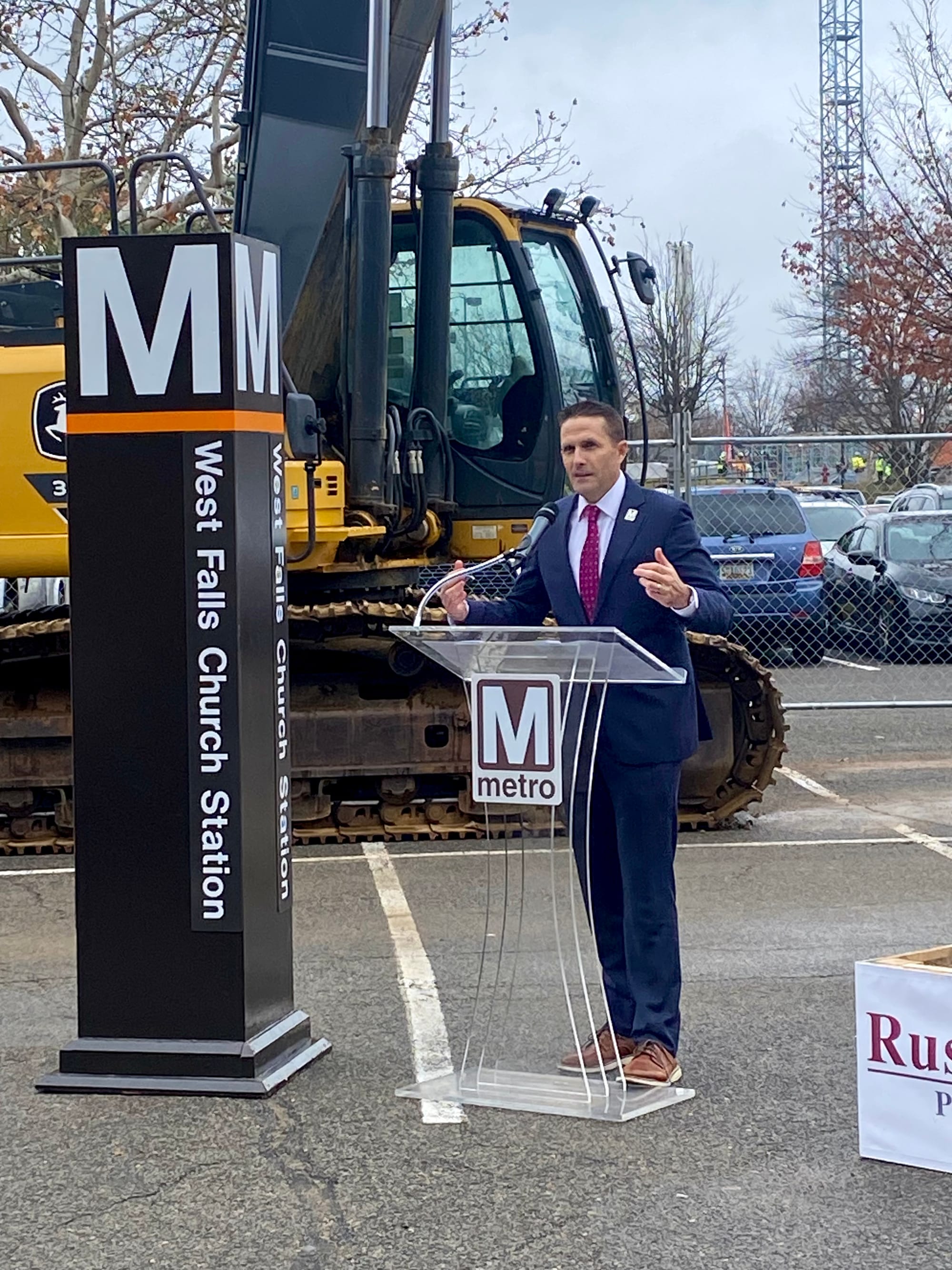
“This is an exciting time with this project,” Clarke said. “As you know, Metro has a Strategic Real Estate Program, generally considered one of the best and most aggressive real estate programs of all transit agencies in the country. And the reason is that we want people to live near transit. We want business to happen near transit. We want to take a parking lot and turn it into awesome housing, awesome retail, and office development, so people can live a more affordable life, people can live with a one-car instead of a two-car family – ideally a zero car vs. a one car family.”
“Affordability in this region is probably our biggest economic challenge and we know that when you live near Metro your life becomes more affordable,” Clarke said. “So Metro’s job is not to be a developer, but to be a partner, a partner with our local jurisdictions and with our private entities to make things happen to grow our tax base, to grow our housing stock, and to create economic activity. And we’ll pick up the ridership in the end. That’s the goal for us.”
Clarke lauded Metro’s recent nationally-awarded successes. “The system is moving really well, “ he said. “ I’m proud to announce that here at Metro we were just awarded the Top Transit Agency in America Award. [Applause].... We’ve led the country in ridership rolls for two years straight. We’re on track for the lowest crime year in the history of Metro. Just yesterday we launched our Credit and Debit Card Tap Ride-and-Go [program] on Metro Bus. We did it on rail in June. We’ve already had six million people tap their credit and debit cards to make it more frictionless to just use Metro. Reliability is up significantly and we’ve identified over $500 million in cost savings and avoidance in the last couple of years.”
“After completing a 12-hour Board meeting yesterday, we’re just glad to be outside!,” joked Chair of the Fairfax County Board of Supervisors Jeffrey McKay. “I was thinking about how hard this was to do…. When you think about all of our players here, from Metro, to our private sector partners, the landowners, multiple jurisdictions, you really couldn’t add much more to this to make it any more complicated. Which is why today is such a celebration.”

“We know that every time we build one of these mixed-use projects near the Metro we’re adding riders to the system which helps sustain Metro longterm,” McKay said. “We know we have a housing crisis and that we need to build a whole lot more housing units in Northern Virginia to support the economic growth that we’re lucky to have and that housing affordability is a big issue for folks. And we’re not only building a lot of housing here, we’re also building some affordable housing which is absolutely essential to supporting our economy.”
“We also note that we have environmental challenges and congestion challenges on our roadways,” McKay continued. “And the more opportunities we have to get people out of their cars and give them opportunities to live in Transit-Oriented Developments, the more we’re relieving congestion, but also the more we’re relieving greenhouse gases and addressing some of the climate change issues we know aren’t ours alone to solve, but we’re in a position to do something about that. So, bringing all of these together in one location, this is so huge.”
And boosting Metro ridership helps boost the regional and state economies, McKay emphasized. “The existence of Metro and the existence of transit in Northern Virginia generates $1.5 billion a year into the state of Virginia’s economy and that doesn’t even count the local revenue that’s generated from the existence of transit systems like this,” he said.
“This project brings together housing, it brings together vibrancy, and it brings together economic development,” said Fairfax Supervisor Jimmy Bierman, whose district includes the West Falls Church Metro Station.
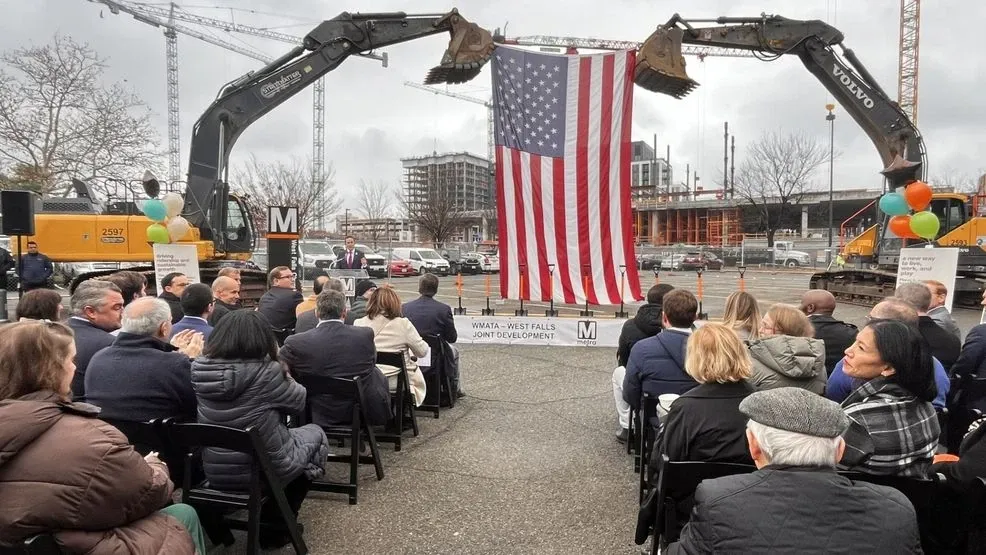
“Over the past seven years, it has taken a lot of compromise, determination and drive by many people to design, approve and construct this development,” said Neal Kumar, vice president of Rushmark Properties. “In total, three million square-feet that’s going to span two jurisdictions, the City of Falls Church and Fairfax County. It involves three entities, the City of Falls Church, Virginia Tech, and WMATA…. This project is an example of how WMATA can deliver transit services, improve the community, and drive economic growth.”
Kumar joked about how much time, effort and money had to be spent to see the project through. “I’m guessing we’ve spent 3,000 legal hours on this …. We’ve also probably spent 150,000 hours on Teams calls and that is not an exaggeration,” he said.
Evan Goldman, executive vice president of acquisition and development at EYA recalled how the project was over a decade in the making. “I’m also the Vice Chair of the Urban Land Institute and all of this started, I think, 12 years ago when there was a Technical Assistance Panel I think I led…. There was this vision of redeveloping this [area] into something walkable, that took advantage of transit instead of hiding it…. This Metro station has been in the corner for way too long, not easy, not visible, and not connected, but that’s something we’re all going to change here today.”
“At EYA, with our ‘Life within walking distance’ tagline, and our mission, we love to connect these great connected places. And that connection is often around transit, it’s often around walkability to retail, and parks, and amenities, and all of these are represented in this redevelopment.”
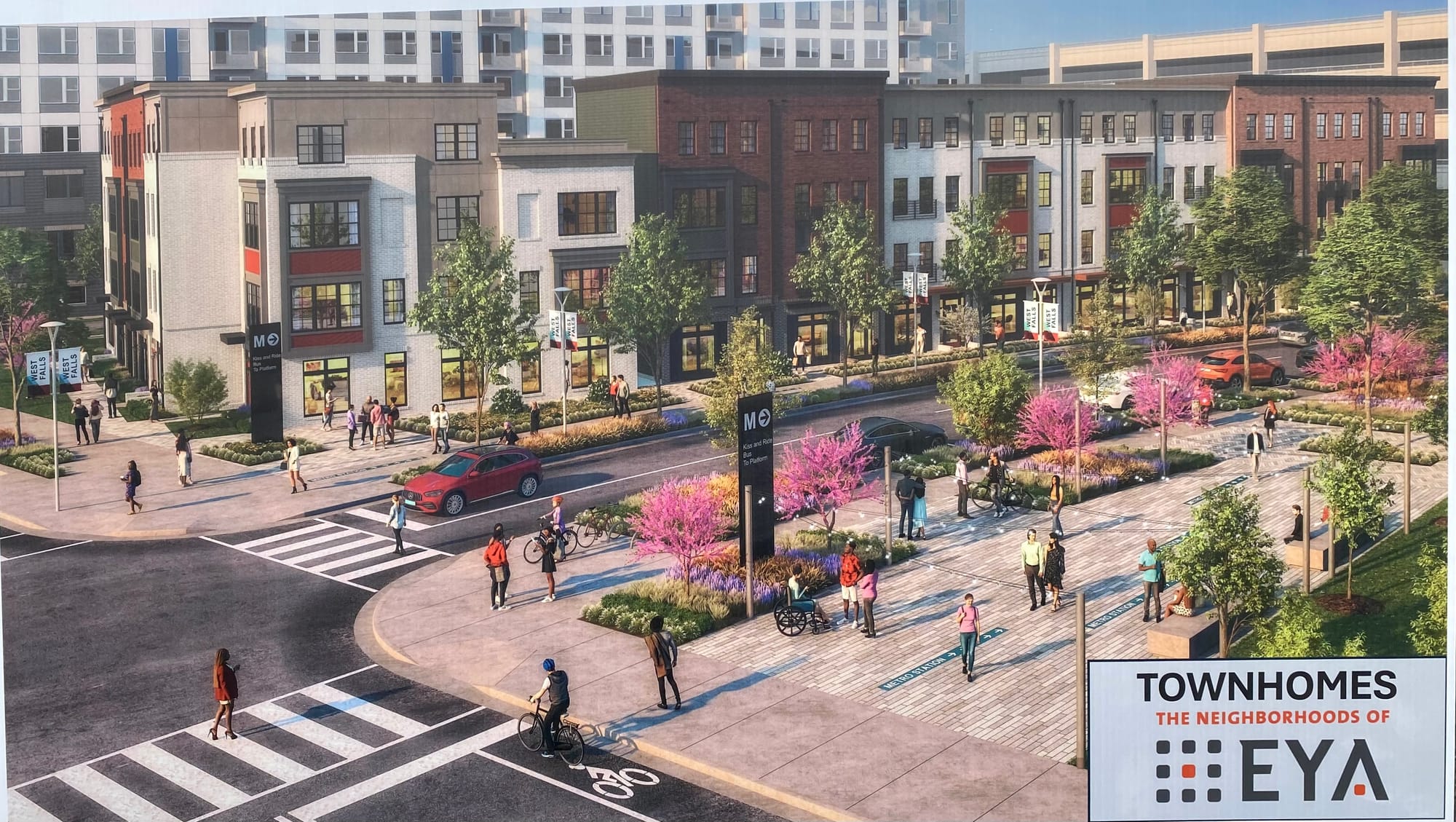
Goldman likes to use metaphors from human biology to describe how the West Falls Development has been conceptualized and realized. “This groundbreaking today represents the final piece of development that will kind of knit all this together,” he said. “When I think about this area, the City of Falls Church site is kind of the heart – it’s the vibrancy, it’s got the retail and the really tall buildings, it’s got kind of the downtown of the overall district. The HITT Construction site, I think of as the brains, with its partnership with Virginia Tech and what we’re doing with the HITT headquarters there and bringing people in during the day. And the WMATA site is the lungs. This is the circulatory system. Our incredible transportation network that'll contain a sustainable future, and allow people to breathe healthier air with less carbon because people are taking transit and not driving their car every place they need to go."
“It creates the shared-use paths and the pedestrian connectivity,” Goldman added, listing off healthy natural air amenities such as linear parks, dog parks and playgrounds. “The WMATA site breathes that fresh air into these open spaces.”
After the formal ceremony, speakers and representatives donned construction helmets, took up their ceremonial shovels, and – with a bit of prompting from photographers and a countdown from Randy Clarke – “broke ground” and proudly lifted soil up for the cameras.
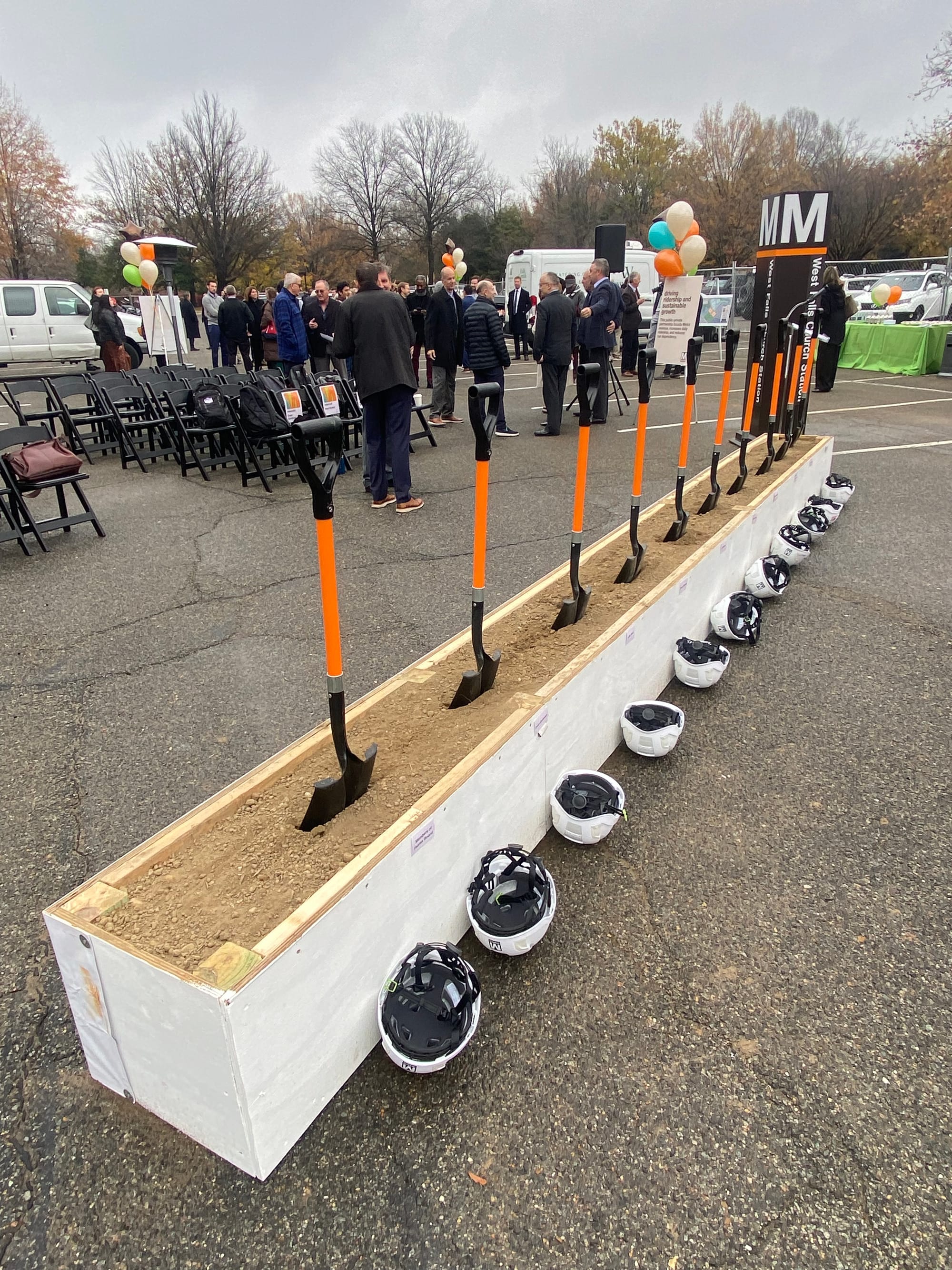
Milling around following the ceremony, The Falls Church Independent caught up with City of Falls Church Mayor Letty Hardi. “It’s exciting!,” she said when asked how she felt about the groundbreaking. “I think as the speakers said, this is really like the capstone of a 10-plus year effort to really stitch together this big development that was sort of the vision a decade in the making. So, it’s really exciting to see the final piece come together and all the work that took place between Fairfax County, WMATA, and Falls Church. So, we’re happy to be great neighbors.”
Asked how the West Falls Development Project fits into the mayor’s vision for development, she said, “Well, obviously, transit-oriented development is important and is really the future. Where you’ve invested in a Metro station, you really need to have people, and to use the land more effectively. So, the fact that we’re re-developing an asphalt parking lot into housing, and housing is a need across-the-board. I always say that if you care about climate, and if you care about transportation, then housing is really central to all of that. So, it’s really exciting to see all the investment in this Metro station.”
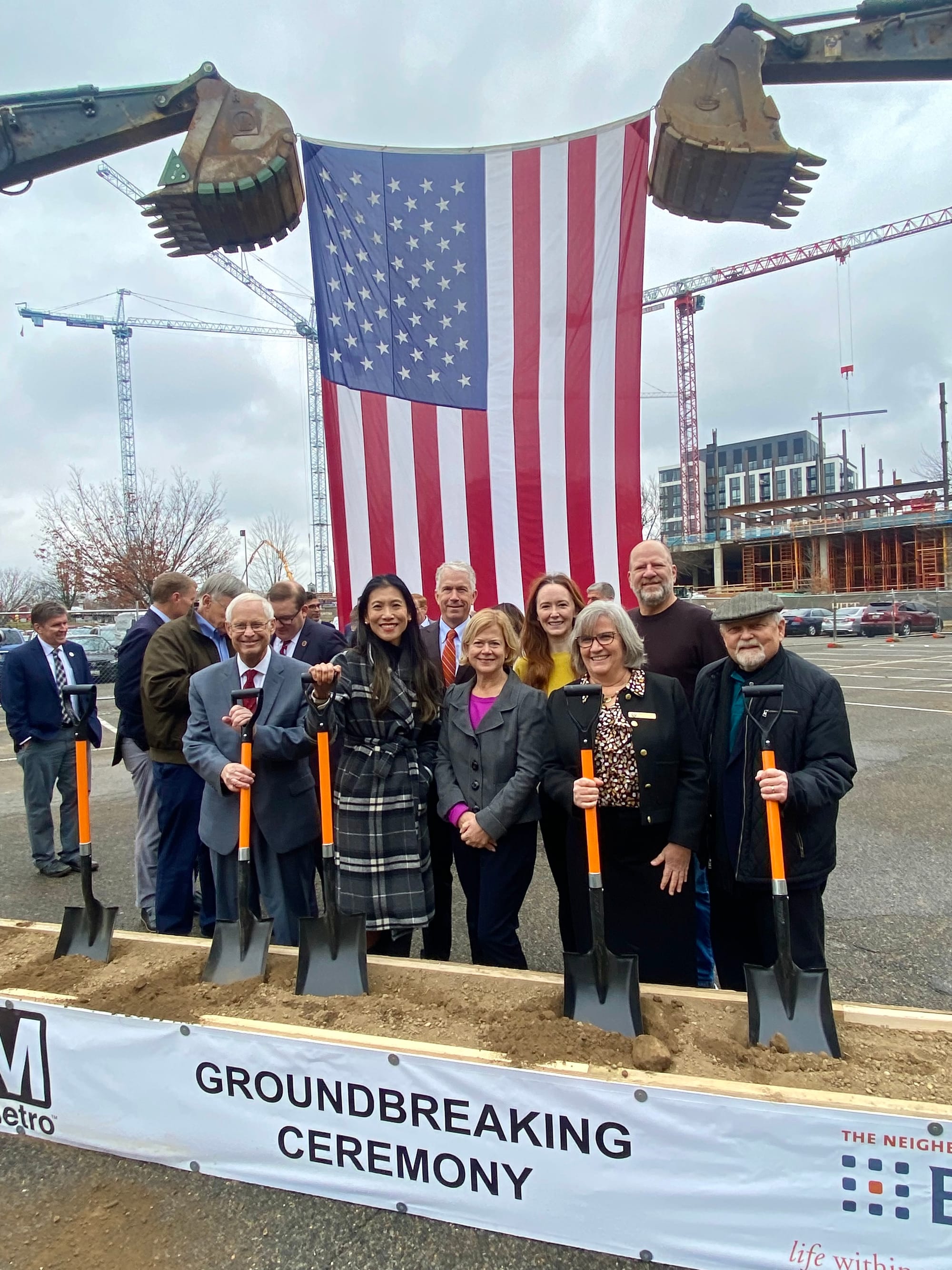
“It’s been a long time coming,” the mayor added. “But, I know it’ll be kind of rocky for 18-24 months. Construction is always, frankly, a pain in the ass. And I know it’s going to be rough, but hopefully the community bears with us through that. Just, know that on the other side, the vision of tying together the three parcels and the 40 acres of more vibrant community that we’re building with access to Route 7 is just so important. So, be patient, stick with us through the construction, and it will be great on the other side.”
We also spoke with Acting Vice President of Real Estate for Metro, Nia Rubin. “We are so excited to be at this great milestone for the project and for, really, the whole community. This is going to be such a transformative development and it’s going to really stitch together three different, distinct projects and create this whole new destination, neighborhood, and Transit-Oriented Development project. Really, we’re creating communities through the transformation and development of our underutilized parking lots and we’re doing this across the region,” she said.
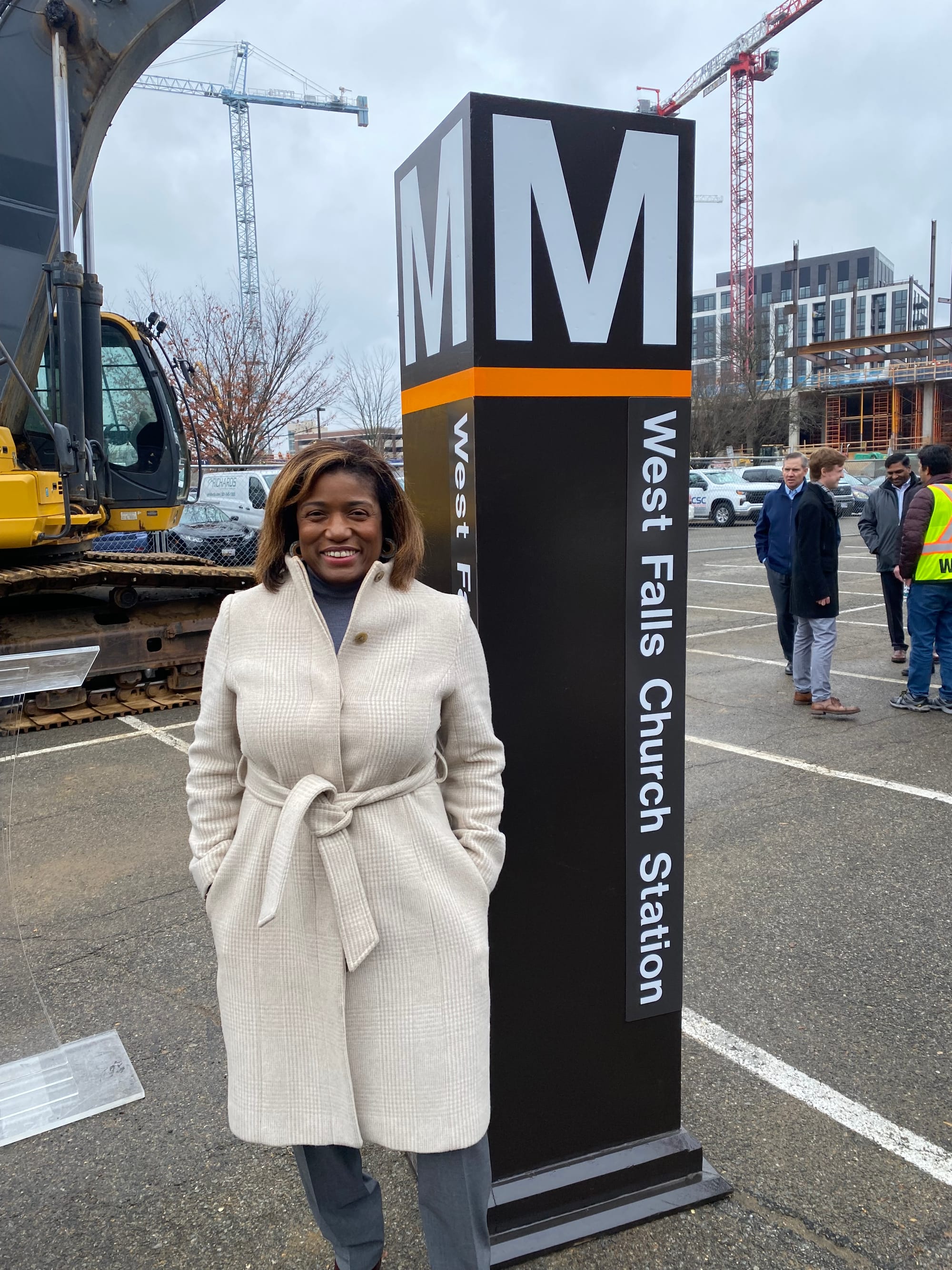
Asked if such development were part of a new vision at Metro, Rubin laughed and said, “No, we’ve actually been doing this since 1976.”
“We’ve done Transit-Oriented Communities for some time,” Rubin followed up. “We’ve partnered with developers over the decades and so we’re certainly in an era where we’re thinking about sites in a way that’s on an even greater scale. What you’re seeing now is more suburban development transforming into urban communities. So, that’s what we’ve really seen over the last 5, 10, 15 years, because downtown [D.C.] is really built out…. So now, the developments are really in the suburban rings and in suburban community lots that are no longer needed to this degree. So, they want urban, walkable, and accessible spaces like these, and to be accessible to the Metro station.”
Last, we bumped into City Council member Justine Underhill, known for her advocacy of TOD and walkable, bikeable cities. “I would say this is the ultimate realization of Transit Oriented Development,” she said. “What that really means is putting people next to places where they can take transit. That means people can live their lives without a car. They can live their lives and meet their daily needs without having to drive everywhere, without having to be stuck in traffic, and not having to be angry at the traffic gods for all the congestion." [Laughs].

“So this is the sort of development we want to see because it really does encourage people to live the lifestyle they want to live and to give the option, at least, for them to live how they want to live,” Underhill continued. “So, I’m really excited to finally see this become townhomes and apartments and all this entire set-up here near the high school, to see this become something with more housing that we desperately need, but especially right next to the Metro station which is where we should be putting housing.”
“It’s also environmentally sound because when people can meet their daily needs without having to jump in their car, or have all sorts of emissions from their single-occupancy vehicle, that means that’s one less car on the road," Underhill said. "Everyone should be celebrating this because one less person will be stuck in traffic alongside you. And it can benefit people who do need to drive everywhere. So, putting the housing here is environmentally sound and this is how we should be developing our city going forward.”
“I’m just so thrilled this is happening after so many years,” Underhill said. “We’ve been waiting for this and to see what’s just open ground here [points] become something so productive that can really change people’s lives. It’s just so exciting to see.”
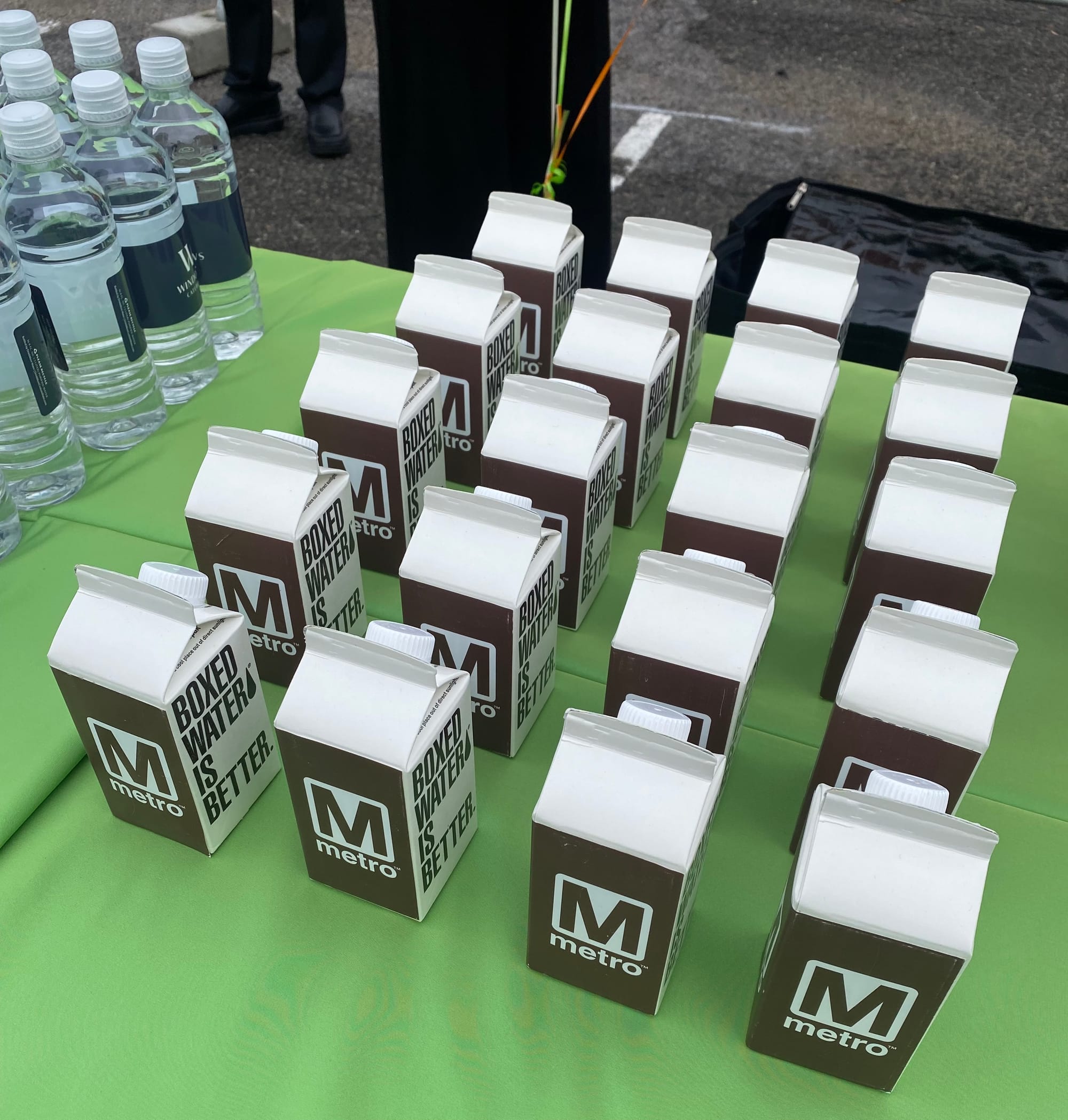
By Christopher Jones

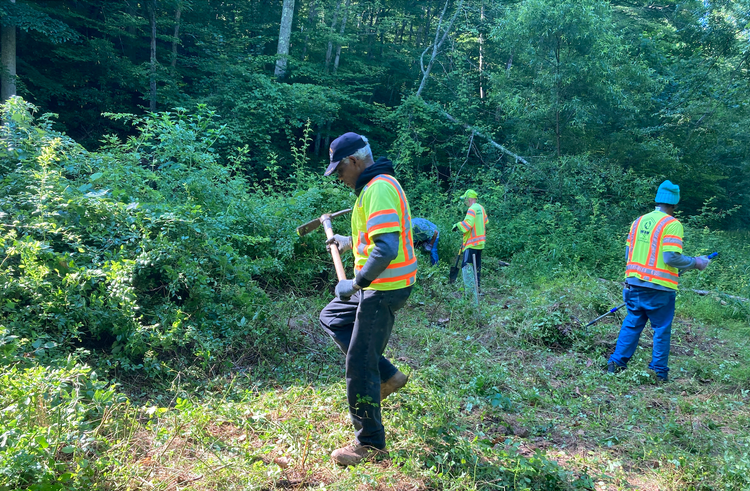

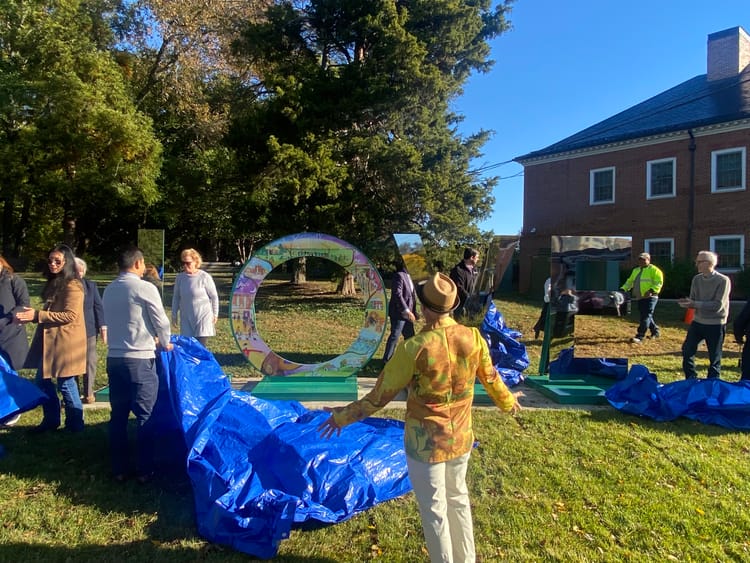


Member discussion